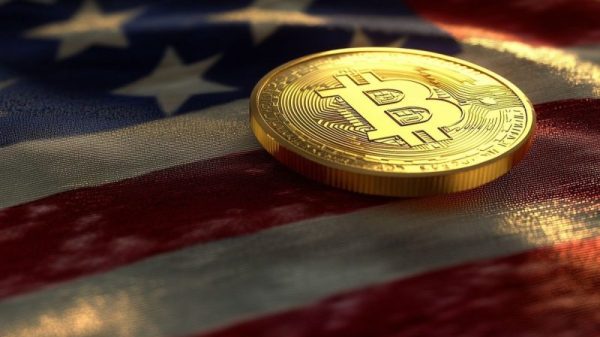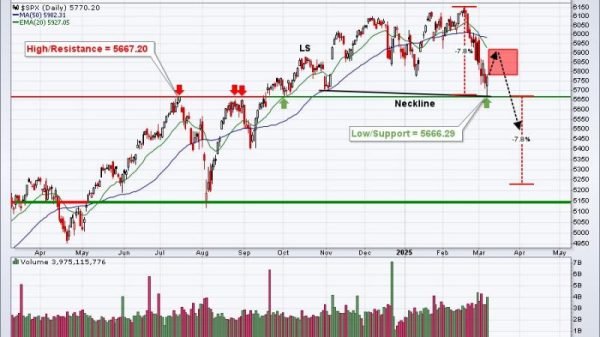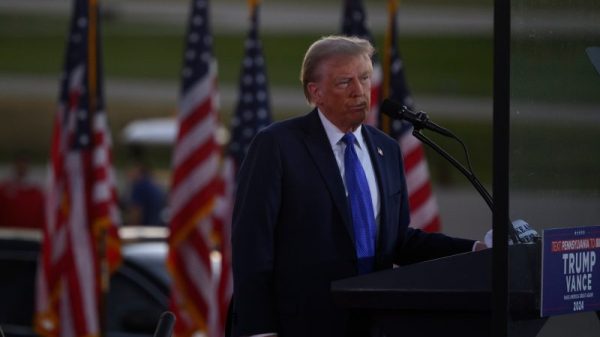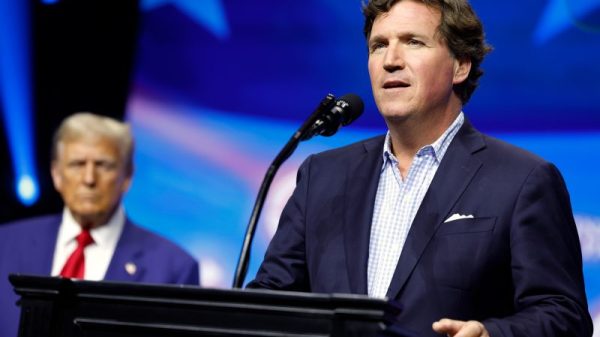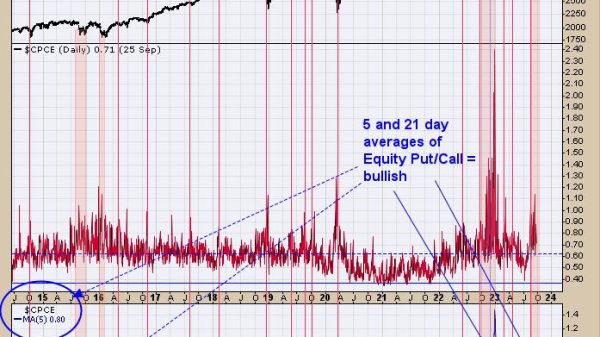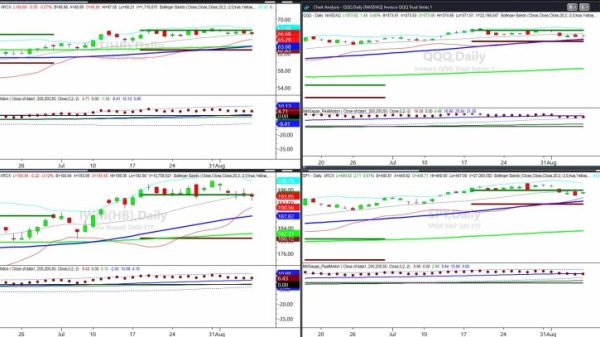The stock market recovered this week as inflation data bolstered interest rate cut expectations in the US.
The same couldn’t be said for cryptocurrencies, with Bitcoin and Ether struggling to break past resistance levels.
As for top company news, the judge who presided over the Epic Games vs. Google (NASDAQ:GOOGL) case made it clear he will order the company to open up its app store — a decision made public the day after the Made by Google event.
1. Markets continue recovering after crash
The markets opened with muted trading activity this week as investors awaited for key inflation data.
The overall market sentiment remained positive, with most major indexes showing signs of recovery. The VIX index stood at 20 on Monday (August 12), a sharp contrast from a week ago, when it topped out at 33.71.
Tuesday (August 13) brought a sense of cautious optimism to the markets as participants braced for the release of July producer price (PPI) index data. PPI rose 0.1 percent to hit 2.2 percent, lower than the expected 2.3 percent.
Bolstered by positive data and optimism surrounding the consumer price index (CPI) report, markets opened high on Wednesday (August 14) and continued to rise after the report’s release, which showed a seasonally adjusted increase of 0.2 percent compared to June. The 12 month inflation rate came in at 2.9 percent, its lowest since March 2021.
The S&P 500 (INDEXSP:.INX) and S&P/TSX Composite Index (INDEXTSI:OSPTX) closed higher, but losses for Alphabet, Tesla (NASDAQ:TSLA) and Meta Platforms (NASDAQ:META) held the Nasdaq Composite (INDEXNASDAQ:.IXIC) back.
Nasdaq Composite’s performance, week of August 12, 2024.
Chart via Google Finance.
With a rate cut all but guaranteed for September, all major sectors moved higher on Thursday (August 15), with tech and resources stocks leading the TSX to its sixth daily win, its longest streak in 13 months.
On Friday (August 16), the VIX opened at 15.29, its lowest score since July 23. All indexes were up on Friday morning, with the Russell 2000 Index (INDEXRUSSELL:RUT) leading in gains as market participants rotated back into small-cap stocks.
All major indexes ended the week higher, with the Nasdaq Composite finishing at 17,631.72, the S&P 500 at 5, 554.25 and the Nasdaq 100 at 19,508.52. The Russell 2000 had the biggest increase, rising by 0.3 percent to end at 2,141.92.
2. Bitcoin back in ‘accumulation mode’
Bitcoin’s value has fluctuated this week. After climbing late last week, the cryptocurrency’s price dropped by almost 5 percent on Sunday (August 11) to around US$58,500 by the end of the night.
Bitcoin then spent most of the week stuck within a range of US$58,000 and US$60,000, with analysts expecting further declines in the coming weeks as the market shows signs of seller dominance.
After Tuesday’s PPI report, Bitcoin briefly topped US$61,000, and stayed close to that mark through early Wednesday. However, gains were quickly reversed after Wednesday’s CPI report release. Bitcoin dipped below the US$58,000 mark again late Thursday afternoon, dragging major cryptocurrencies down alongside it.
Data from Glassnode suggests that Bitcoin is back in “accumulation mode,” a period when investors are actively buying and holding onto an asset. Analysts predict a potential breakout in the near future as buyer interest grows. Titan of Crypto posited that its price could return to US$66,000 by September, based on past trends.
Ether also hasn’t fully recovered from the crypto selloff on August 5, down 14 percent in as many days. Ether spent the week bouncing between US$2,600 and US$2,800.
Crypto anon McKenna wrote that they don’t see Ether breaking past US$2,900 until mid-September.
Ethereum gas fees have also dropped significantly, due to reduced demand for block space and the March Dencun upgrade according to Ryan Lee, chief analyst at Bitget Research. Lee explained to CoinDesk on Friday that lower fees have led to lower amounts of Ether being burned and thus an increase in the token’s supply.
Historically, low gas fees often indicate that Ethereum’s price will bottom in the medium term, Lee said, and the cryptocurrency’s value tends to bounce back strongly after this cycle. When combined with a cycle of rate cuts, “the market’s wealth effect is full of possibilities,” he explained.
3. Made by Google event gets muted response
At its Made by Google event on Tuesday, Google unveiled four new phones, along with updated versions of the Pixel Watch and Pixel Buds. The company’s presentation focused mainly on advances in on-device artificial intelligence (AI) brought by the integration of the new G4 Tensor chip and the Gemini system into the Android operating system.
The G4 chip is expected to improve app coordination and productivity and offer users a more seamless experience. The devices will also come with Gemini Live, Google’s conversational AI agent, described as an assistant users can hold long, free-flowing conversations with to help them brainstorm, think creatively and work through complex problems.
Investors had a muted response, with Alphabet’s share price seeing little change on Tuesday. It fell by 3.48 percent by midday Wednesday following reports that the US Department of Justice may seek to break up Google after Judge Amit Mehta’s August 5 ruling that the company operated as an illegal monopoly.
Also on Wednesday, US District Judge James Donato, who presided over the Epic Games vs. Google antitrust lawsuit last year, said during a separate hearing that he intends to order Google to open up its app store. He also said he is considering a solution that would apply in countries outside the US as well.
In his December verdict, Judge Donato ultimately sided with Epic Games, which accused Google of anti-competitive practices related to the Google Play Store. A final ruling will be issued in the coming weeks.
Google shares rebounded on Friday morning, gaining 1.93 percent in the first hour of trading.
4. NVIDIA’s Blackwell GPUs face delays
Rumors of delays in the rollout of NVIDIA’s (NASDAQ:NVDA) much-anticipated graphic processing units (GPUs) continue to circulate. Starting on August 2, reports from multiple sources, including the Information, which broke the story, alleged that the rollout of the company’s Blackwell GPUs, would be delayed to at least the first quarter of 2025.
The new GPUs were originally anticipated in Q4 of this year.
In a report, SemiAnalysis said reasons for the delay include a design issue related to bridge dies and complications with Taiwan Semiconductor Manufacturing Company’s (NYSE:TSM) CoWoS-L packaging technology, which is being used for the first time in a mass-market chip. The report suggests that the Blackwell B200 GPUs will ship in low volume, and that the B200A GPUs, designed for lower-end and mid-range AI systems, possibly wouldn’t ship until Q2 or even Q3 2025.
The timing of the company’s announcement couldn’t have been more inopportune, colliding with the tumultuous Asian market events on August 5 that triggered panic selling in large-cap technology stocks.
NVIDIA saw its share price reduced by over 15 percent from its Friday close to its lowest point Monday. At the time of this writing, the company’s share price was below its value from a month ago.
Compounding NVIDIA’s challenges, this past Wednesday, Taiwanese server manufacturer Hon Hai Precision Industry, also known as Foxconn (TWSE:2354), revealed that only a percentage of servers containing NVIDIA’s GB200 — that is, a GPU that combines two Blackwell GPUs with a Grace central processing unit — will ship in 2024.
According to Bloomberg, NVIDIA spokesman James Wu said in a conference call that Foxconn will be among the first to ship products with GB200 chips, but that most of the servers will ship in Q1 2025.
5. California AI bill advances past Senate committee
California lawmakers moved SB 1047, which proposes regulations to ensure the safety of AI technologies, through the Appropriations Committee on Thursday afternoon after making several amendments.
Introduced on February 7 by Senator Scott Wiener (D-CA), the original draft of the bill called for tech companies to test their technologies before releasing them to the public, and would have allowed California’s attorney general to sue for negligent safety practices before a catastrophic event occurred.
The bill has been heavily criticized by prominent figures in the tech industry, including Stanford professor Fei-Fei Li, who wrote in Fortune magazine last week that the bill, while well-intended, would stifle innovation and have “significant unintended consequences, not just for California, but for the entire country.”
AI firm Anthropic has been actively involved in discussions surrounding the bill, penning a letter to Buffy Wicks, chair of the California Assembly Appropriations Committee, in July with suggested amendments, some of which were incorporated into the newest draft of the legislation.
Under the new proposal, California’s attorney general can seek injunctive relief and sue in the case thata model causes a catastrophic event. The amendments would also remove criminal liability for AI labs, ease safety requirements for AI models and exempt models under US$10 million from developer responsibility.
Additionally, the amendments removed a proposed Frontier Model Division, a state agency that would be established to oversee compliance, issue guidance and advise state officials on certain aspects of AI. Instead, those matters would be assigned to a Board of Frontier Models, which was expanded from five members to nine.
Even with the changes, the bill has met resistance in the White House. Eight Congress members representing California sent a letter to Governor Gavin Newsom on Thursday, asking him to veto SB 1047.
In their view, the bill “would not be good for our state, for the start-up community, for scientific development, or even for protection against possible harm associated with AI development.”
SB 1047 will now go to California’s Assembly floor for a final vote. If it passes there, it will need to be voted on again in California’s Senate before it can be signed into law.
Securities Disclosure: I, Meagen Seatter, hold no direct investment interest in any company mentioned in this article.





